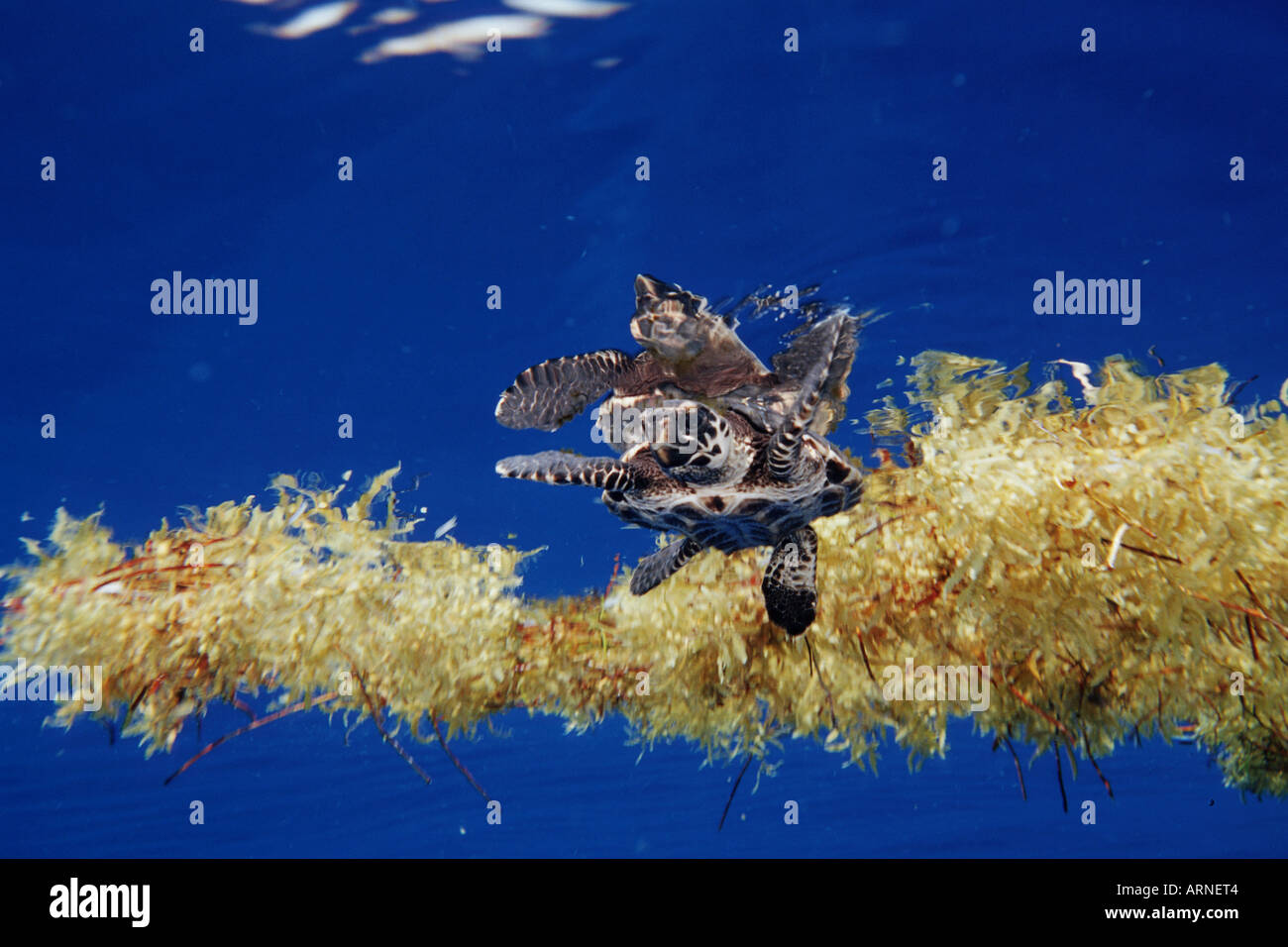

bissa" refers to populations that reside in the Pacific Ocean. In 1857, the species was temporarily misdescribed as "Eretmochelys imbricata squamata". In 1843, Austrian zoologist Leopold Fitzinger moved it into genus "Eretmochelys". Linnaeus originally described the hawksbill sea turtle as "Testudo imbricata" in 1766, in the 12th edition of his "Systema Naturae". Males have more intense pigmentation than females, and a behavioural role of these differences is speculated. It is unknown if this is derived from the turtle's diet, which includes biofluorescent organisms like the hard coral "Physogyra lichtensteini". The hawksbill sea turtle has been shown to be biofluorescent and is the first reptile recorded with this characteristic. imbricatas posterior scutes overlap in such a way as to give the rear margin of its carapace a serrated look, similar to the edge of a saw or a steak knife. While its carapace has five central scutes and four pairs of lateral scutes like several members of its family, "E.

One of the hawksbill's more easily distinguished characteristics is the pattern of thick scutes that make up its carapace. The hawksbill's fore limbs have two visible claws on each flipper.

Its elongated, tapered head ends in a beak-like mouth, and its beak is more sharply pronounced and hooked than others. Several characteristics of the hawksbill sea turtle distinguish it from other sea turtle species. The turtle's shell, or carapace, has an amber background patterned with an irregular combination of light and dark streaks, with predominantly black and mottled-brown colors radiating to the sides. The heaviest hawksbill ever captured weighed 127 kg. Climate change affects the turtles by warming the temperature of the sand that sea turtle eggs are laid in, which in turn affects the outcome of the hatchlings’ sex.Adult hawksbill sea turtles typically grow to 1 m in length, weighing around 80 kg on average. Six of the seven sea turtle species are classified as threatened, endangered, or critically endangered, due largely to human impact in the form of hunting, bycatch in fishing nets, pollution, and climate change. Lights from hotels, homes, and other buildings can confuse the turtles into heading the wrong way. Natural light at the horizon guides the hatchings to the ocean. Another threat comes from coastal development. Females dig a hole in the sand, then deposit their clutch of eggs (up to 100, in the leatherback’s case), cover it back up, then return to the sea.Īfter about 60 days, the eggs hatch and tiny hatchlings make their way from the nest to the water at night, often a deadly ordeal as seabirds, crabs, and other predators prey on the young turtles. Sea turtles mate at sea, then come ashore on beaches to lay their eggs. The leatherback travels an average of 3,700 miles each way. Sea turtles make incredibly long migrations between feeding and breeding areas. Photograph by David Doubilet, Nat Geo Image Collection Turtle journeys

A critically endangered hawksbill sea turtle hatchling paddles away from shore in Cuba.


 0 kommentar(er)
0 kommentar(er)
